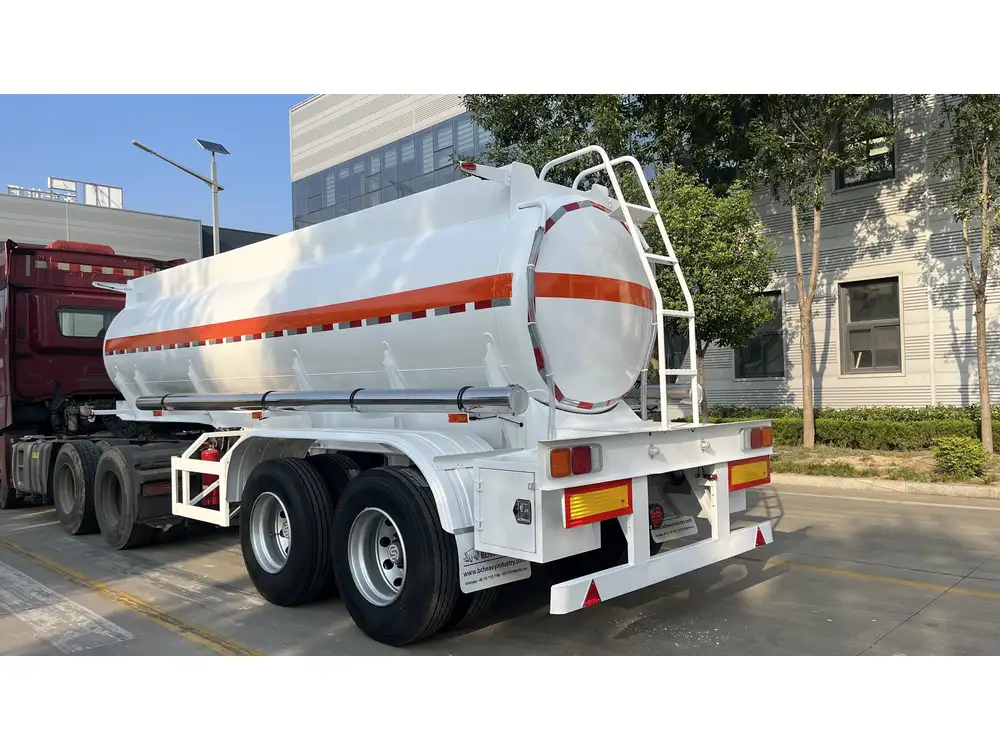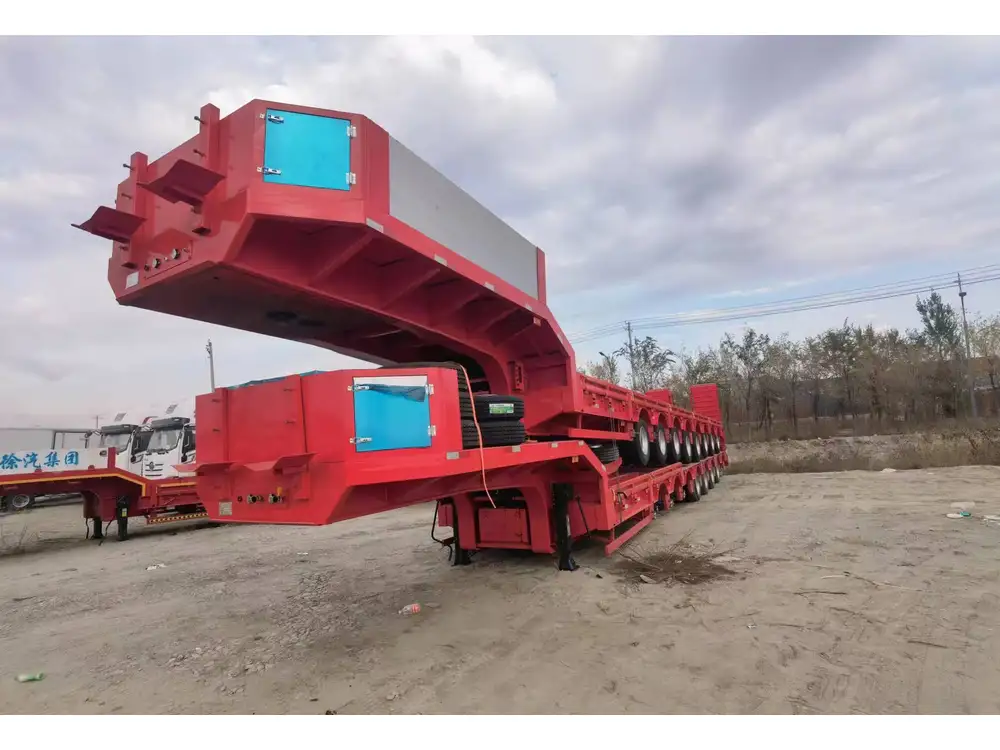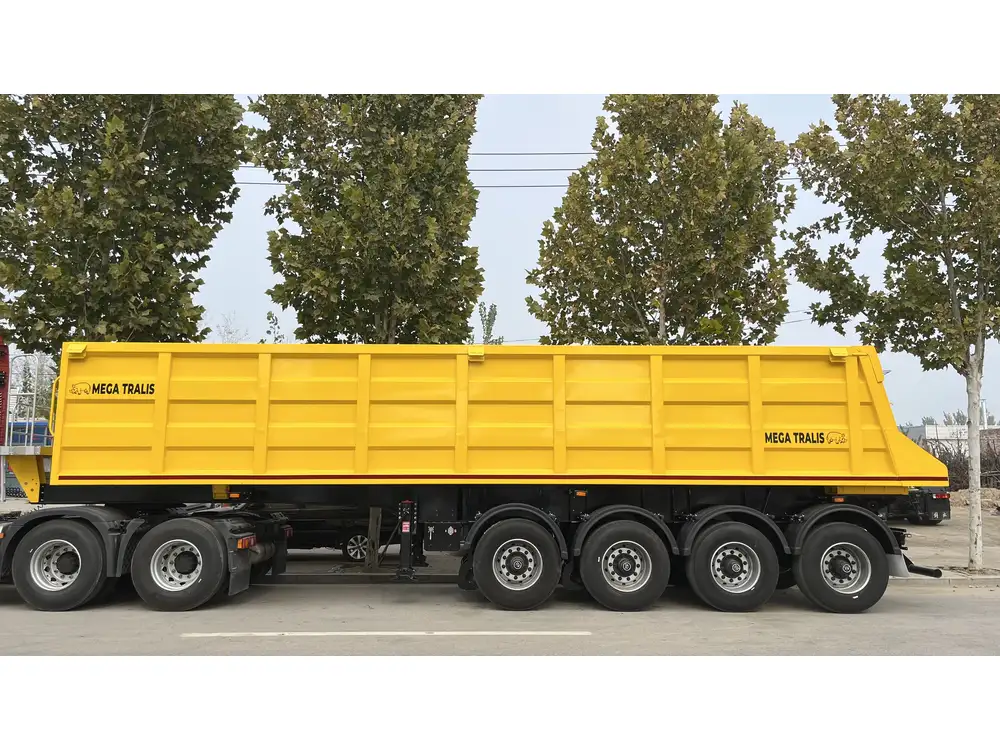FedEx, a name synonymous with reliability in logistics, employs various semi-trailer designs tailored to different shipping needs. The dimensions of these trailers are critical for logistics management, fleet planning, and regulatory compliance. This article delves into the specifics of FedEx semi-trailer lengths, their configurations, and implications for businesses seeking logistics solutions.
Trailer Types and Their Dimensions
When discussing FedEx semi-trailers, it is essential to understand the different types available in their fleet. Each trailer serves distinct functions based on the cargo and delivery requirements.
1. Dry Van Trailers
- Common Lengths: 28 feet to 53 feet.
- Description: The dry van is the most common type of semi-trailer used by FedEx. It is enclosed to protect cargo from weather and theft, making it suitable for general freight.

2. Reefer Trailers
- Common Lengths: 28 feet to 53 feet.
- Description: Refrigerated trailers, or reefers, are designed to transport temperature-sensitive products. Like dry vans, they offer insulation against the elements but also include cooling systems.
3. Flatbed Trailers
- Common Lengths: 48 feet to 53 feet.
- Description: Flatbed trailers provide an open platform for transporting oversized cargo, machinery, or building materials. They are versatile but typically require additional securing measures for safe transport.
4. Specialized Trailers
- Common Lengths: Vary significantly based on requirements.
- Description: FedEx also utilizes specialized trailers for unique cargo types, including hazardous materials or oversized loads. Their lengths can vary widely to accommodate the specific needs of the shipment.
| Trailer Type | Common Lengths | Use Case |
|---|---|---|
| Dry Van | 28-53 feet | General freight, non-perishable goods |
| Reefer | 28-53 feet | Food, pharmaceuticals, temperature-sensitive goods |
| Flatbed | 48-53 feet | Oversized loads, machinery, construction materials |
| Specialized | Varies | Hazardous materials, custom requirements |

Regulatory Considerations
Length specifications for semi-trailers are regulated by both federal and state laws. Understanding these regulations is crucial for any shipper working with FedEx or similar logistics companies.
Federal Regulations
Under the Federal Motor Carrier Safety Administration (FMCSA), the maximum allowed length for semi-trailers is typically 53 feet for the trailer. However, combinations of tractor and trailer can stretch longer in designated routes if properly permitted.
State Regulations
Each state may impose its own restrictions on trailer lengths. Therefore, it is imperative for businesses to be aware of both federal guidelines and state-specific regulations to avoid fines and ensure compliance.
| Regulatory Source | Maximum Length | Notes |
|---|---|---|
| FMCSA | 53 feet | Standard length for most trailers |
| State Regulations | Varies | Specific length regulations by state |

Implications for Shippers
Choosing the correct trailer size is pivotal for optimizing shipping logistics. Here are some critical factors to consider:
1. Load Space Optimization
Utilizing the right length trailer ensures maximum load efficiency. An oversized trailer may lead to wasted space, while a too-small trailer could result in additional trips, increasing transportation costs.
2. Delivery Times
Longer trailers can potentially carry more cargo, streamlining the delivery process and reducing the overall transport time. This becomes increasingly relevant for businesses needing swift turnaround times.

3. Loading and Unloading Times
Different trailer types require various handling techniques. For example, flatbeds might necessitate cranes or forklifts for loading and unloading, whereas dry vans typically allow for straightforward access with loading docks.
4. Cost Management
The length of a semi-trailer can influence fuel efficiency and operational costs. Longer trailers may utilize more fuel, impacting bottom lines. Businesses must weigh these variables when selecting a carrier.
Comparison of FedEx Semi-Trailers
Examining the main semi-trailer types used by FedEx offers insights into their specifications and suitability for different types of loads.
| Features | Dry Van | Reefer | Flatbed |
|---|---|---|---|
| Protection | Enclosed | Temperature-controlled | Open platform |
| Cargo Types | General freight | Perishable goods | Oversized cargo |
| Weight Capacity | Typically 45,000 lbs | Varies significantly | Varies significantly |
| Versatility | Moderate | Specific | High |

Practical Applications of Semi-Trailer Lengths
Choosing the appropriate semi-trailer length can significantly influence business operations. Here are examples of how various industries might leverage FedEx’s semi-trailer options:
1. Retail Industry
Retailers often rely on dry vans for transporting clothing, electronics, and other general merchandise. A standard 53-foot dry van is ideal for maximizing storage and meeting supply demands without incurring additional trips.
2. Food and Beverage Sector
Companies in the food industry routinely utilize reefer trailers to ensure freshness and compliance with health standards. Here, the 48-foot or 53-foot reefer becomes essential in daily logistics to transport perishables efficiently.

3. Construction and Heavy Industries
Flatbed trailers are pivotal for companies in construction, allowing the transport of heavy machinery and materials such as steel beams and timber. The flexibility of using 48-53 foot flatbeds ensures that larger loads can be carried effectively.
4. E-commerce
With the rise of online shopping, e-commerce businesses require a reliable logistics partner. FedEx’s variety of trailers ensures that orders, ranging from small packages to larger bulk orders, are delivered efficiently and on time.
Conclusion: Choosing the Right FedEx Semi-Trailer
Understanding the lengths of FedEx semi-trailers is paramount for businesses looking to optimize their logistics processes. By evaluating specific needs, regulatory standards, and the diverse applications of each trailer type, companies can make informed choices that enhance efficiency, reduce costs, and meet consumer demands.
As we explored, FedEx operates with a fleet of semi-trailers ranging from 28 feet to 53 feet, each suited for unique logistical needs. The decision on trailer selection should involve careful consideration of load type, delivery schedules, and operational costs.
Effective utilization of these dimensions can lead to significant efficiency gains, ensuring businesses remain competitive in today’s fast-paced market environment. By leveraging the features and benefits associated with each trailer type, businesses can navigate the complexities of shipping logistics with greater ease and confidence.



